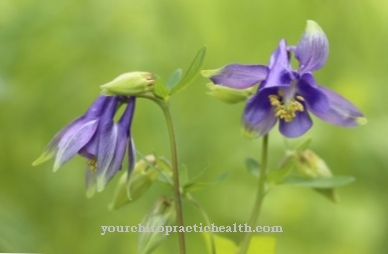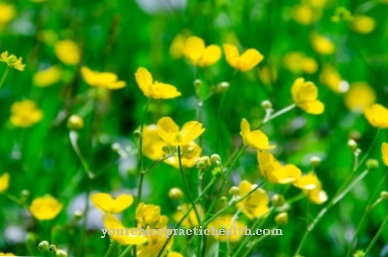Vetiver is above all a well-known perfume ingredient and is also called moth root because of its insect-repelling effect. The essential oil is available pure or mixed with carrier oils and, depending on the application, can do a lot more than just smell.
Occurrence & cultivation of vetiver

Vetiver is a type of sweet grass that thrives in the tropical climate of Asia and has long been known as a cultivated plant. The roots, which smell strongly of earth and forest, are part of some traditional curry varieties in India and Sri Lanka. Essential oil as an ingredient in soap production is of existential importance for the countries of origin.
For further processing in the fragrance industry, the Caribbean island nation of Haiti, China, Indonesia, Brazil and Paraguay now produce more than half of the world's requested raw materials. However, this is not its only use. The height of the botanically named Vetiveria zizanoides plant can be half a meter to sometimes 1.80 meters.
It keeps the soil moist with long roots and has detoxifying properties. Vetiver is used in perfume production, aromatherapy and naturopathy in the form of pure oil, mixed in for nebulization or massage and as a smoked product. In the fragrance lamp, as a bath additive, as an insect repellent and in the formulas of many perfumes, the essence unfolds its relaxing and grounding effect.
Effect & application
The essential oil of the vetiver root obtained and purified by steam distillation can be used externally as a rub or smoked product and internally as an inhalation or even ingested. Vetiver can help with physical and mental complaints to support the healing process. Often both levels are intertwined. The color of the rather thick oil moves in the reddish-brown spectrum.
The intense, earthy scent with wood notes is considered pleasantly calming. The cosmetics industry uses vetiver to anchor more volatile fragrances. Their aromas remain perceptible longer in connection with vetiver. Depending on the desired effect, the oil is used pure or mixed. A common use for general relaxation is the mixture of up to five drops of the oil with two other relaxing oils and a little cream as a bath additive on restless days or simply to prevent stress.
The influences of essential oils can often not be clearly separated into physical and mental ones. So with a general, initially emotionally felt feeling of relaxation, symptoms such as stomach ache, which one believed to be purely physical, can of course disappear. A similar interaction applies to hormone-related disorders of the metabolism or to fears and even trauma.
Vetiver oil is also suitable for skin treatment as it helps regulate the formation of talc. This has a balancing effect on acne, too dry or oily skin, wrinkles, irritated skin, non-specific itching and tired skin. Care with the oil is an effective therapy companion and good prevention.
Pure vetiver is used in baths and rubs as well as a scented oil to build up and strengthen the immune system and nerves. The physical effects and areas of application include in particular the promotion of blood circulation and immune defense and the relief of muscle cramps and muscle pain. Vetiver has a hormone-regulating effect and stimulates the endocrine system.
The internal use is recommended for depression, nervousness or stress as well as being uprooted. It is not yet known exactly how an essential oil actually relieves anxiety and exhaustion, but users convincingly report that it supports and encases the grounding and renewing effect in sleep disorders, blockages and trauma.
It is understandable that an aromatic hydrocarbon is similar in its biochemical composition to innumerable human endogenous substances. A substance that measurably stimulates the production of the body's own messenger substances, naturally supports and relieves a tired metabolism. Neutral carrier oils such as almond oil are suitable for bathing applications with vetiver. It is also usually applied mixed for massage, especially for treating connective tissue.
Applications for stretch marks or cellulite are considered successful. When inhaled, the molecules of the essential oil reach those areas of the brain that control emotions, hormone metabolism and the autonomic nervous system via the olfactory nerve. In addition to rosewood, lavender, ylang-ylang and lemon balm, vetiver is also known for its regulating and focusing effect on depressive moods. A bath with vetiver causes deep relaxation if you feel uprooted or disoriented. It grounds and strengthens the nerves, which is felt to be energizing.
Importance for health, treatment & prevention
Since naturopathy is currently being rediscovered, it is exciting to see which effects of the vetiver are recognized and proven over time. It would be a shame to know vetiver only as a fragrance stick and as a fixative in perfumery. Naturopaths appreciate vetiver as a problem solver for skin and connective tissue disorders such as dryness or orange peel.
Together with lavender and clary sage, the oil helps treat menopausal symptoms. The effect of essential oils in the naturopathic field is briefly explained. The oil of the vetiver root contains valuable secondary plant substances, which are called sesquiterpenes. The term sounds complicated, but in biochemistry it only describes a group of mostly aromatic hydrocarbon compounds with three isoprenes and the formula C 15 H 24.
The ethereal components of vetiver cause positive signals to the vegetative nervous system via vaporization in the mucous membranes, via smokiness or rubbing into the skin. They lower aggressiveness, calm fear and give back support and self-confidence. They relieve muscle cramps and joint pains and restore a natural balance to all sensations.
This has already made the vetiver root the object of several studies, including in America, since its properties are of interest to heart researchers and several psychological disciplines. Other essential oils with a fairly high proportion of sesquiterpenes are chamomile, lavender and sandalwood. They also have healing potential in both physical and mental areas.
With their roots up to three meters deep, vetiver plants stop soil erosion and therefore have a long tradition as cultivated plants. People in Asia use vetiver roots to make ritual, scented wickerwork and mats for everyday use.








.jpg)



















